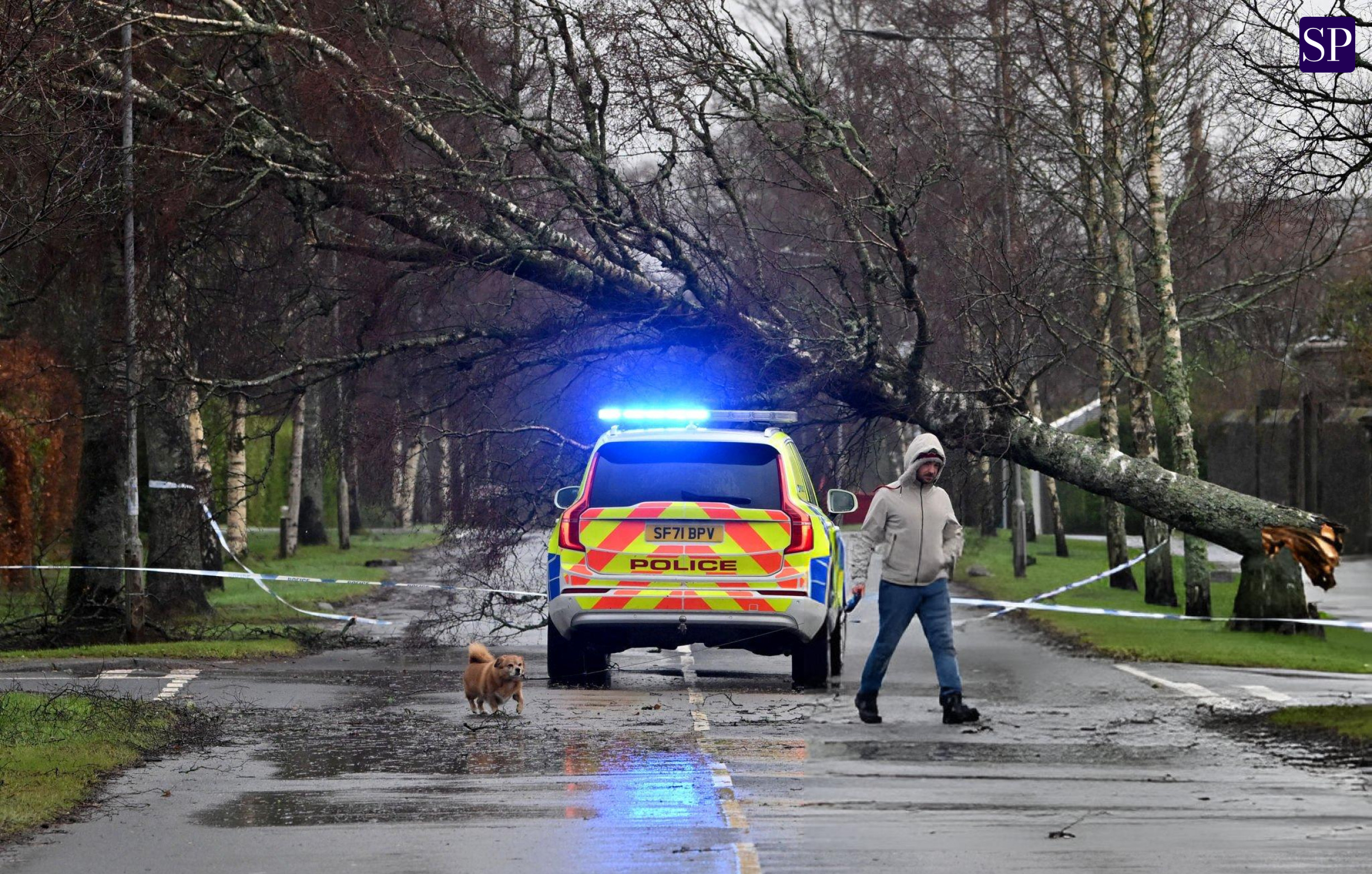In a devastating display of nature’s power, Storm Éowyn wreaked havoc across the UK and Ireland, leaving two people dead, over a million homes without power, and widespread destruction in its wake. The storm’s record-breaking winds and relentless rain prompted severe weather warnings and forced communities to confront the deadly impact of extreme weather conditions.
Lives Claimed by Storm Éowyn’s Fury
Two young men tragically lost their lives during the storm, their deaths underscoring the catastrophic effects of extreme weather events. In Scotland, a 19-year-old man was killed on Friday morning in East Ayrshire when a tree struck his car. He was rushed to a hospital in Glasgow, but he succumbed to his injuries on Saturday. At the time of the incident, an amber weather warning was in place, just hours before the Met Office escalated it to a rare red warning. Scotland’s First Minister, John Swinney, expressed his condolences on social media, calling the incident “tragic and heartbreaking” and extending sympathies to the victim’s family and friends. In Ireland, a 20-year-old man, Kacper Dudek, also fell victim to the storm. Originally from Poland but raised in Lifford, County Donegal, Dudek was struck by a falling tree while driving home from work early on Friday morning. Reports suggest that he was performing a U-turn to avoid an accident when a tree, uprooted by the storm’s ferocious winds, crushed his car. These losses bring into sharp focus the devastating human cost of Storm Éowyn’s unprecedented ferocity.
Storm Éowyn: A Generational Weather Phenomenon
Described as one of the most powerful storms in decades, Storm Éowyn brought hurricane-strength winds, torrential rain, and significant infrastructure damage. The highest wind gust recorded was an astonishing 114 mph (183 km/h) in Mace Head, County Galway, while Drumalbin in South Lanarkshire recorded gusts of 100 mph. As Éowyn raged, power outages affected over 1 million properties across the UK and Ireland. In Northern Ireland alone, nearly 30% of households and businesses lost electricity, with 101,000 still without power as of Sunday morning. In Scotland, 20,000 homes were left in darkness, while in the Republic of Ireland, approximately 300,000 properties faced power cuts. Derek Hynes, managing director of a major energy transmission company, warned that restoring power fully could take up to 10 days due to the extensive damage. “We are working tirelessly to address faults and restore electricity to as many homes and businesses as possible,” he stated. The storm’s powerful gusts uprooted trees, damaged buildings, and caused structural failures. The Royal Botanic Garden Edinburgh reported severe damage to its grounds, losing 15 trees, including a towering 29-meter Cedrus deodara, which had stood since 1859. In County Galway, the storm’s intensity even caused a wind turbine to snap in half, an occurrence that highlights the raw, destructive power of Éowyn. Meanwhile, authorities have been scrambling to clear fallen trees and debris that have blocked roads and damaged property across affected regions.
New Storm Looms: Storm Herminia Approaches
Even as communities begin the arduous task of recovering from Éowyn, another weather threat looms on the horizon. Storm Herminia, named by meteorological authorities in Spain, is set to bring more wind and rain to the UK and Ireland. The Met Office has issued yellow weather warnings for wind and rain covering large parts of the UK, including southern England, the Midlands, Wales, northern England, southwest Scotland, and Northern Ireland. Forecasters predict wind speeds of up to 80 mph along coastal areas, while inland regions could experience gusts of 50–60 mph. Met Office meteorologist Tom Morgan provided a glimmer of hope, stating that conditions are expected to improve after Tuesday. “From Tuesday onwards, I expect weather to remain changeable with some showers and wind, but not as disruptive as it has been,” he said.
Local governments, emergency services, and utility companies are working around the clock to address the widespread damage caused by the storm. The priority remains restoring power to affected households, clearing debris, and ensuring public safety as recovery efforts gain momentum. Internationally, weather experts are analyzing the storm to understand how climate change and shifting weather patterns contribute to the increased frequency and severity of such events. Storm Éowyn has served as a stark reminder of the deadly consequences of extreme weather.
The deaths of two young men, along with the extensive destruction, underscore the urgent need for improved preparedness and resilience in the face of such natural disasters. While efforts to recover from Éowyn continue, the focus now turns to mitigating the potential impact of Storm Herminia. For communities affected by the devastation, the path to recovery will be long and challenging, but the resilience and determination of those impacted remain strong.
Storm Éowyn’s record-breaking winds and widespread destruction have left a deep scar across the UK and Ireland. As recovery efforts unfold, the tragedy of two lives lost serves as a somber reminder of nature’s immense power. With Storm Herminia on the horizon, preparedness is key to minimizing further loss and damage. Extreme weather events like Éowyn highlight the growing challenges posed by climate change and the urgent need for global action to address these risks. In the meantime, the resilience of affected communities stands as a testament to human determination in the face of adversity.
